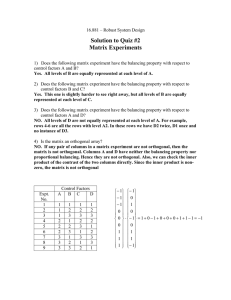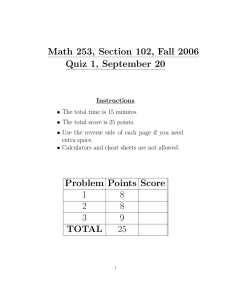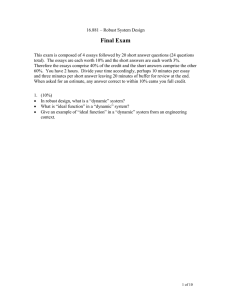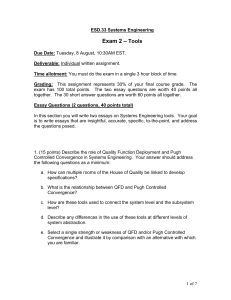Quiz #2 Matrix Experiments
advertisement
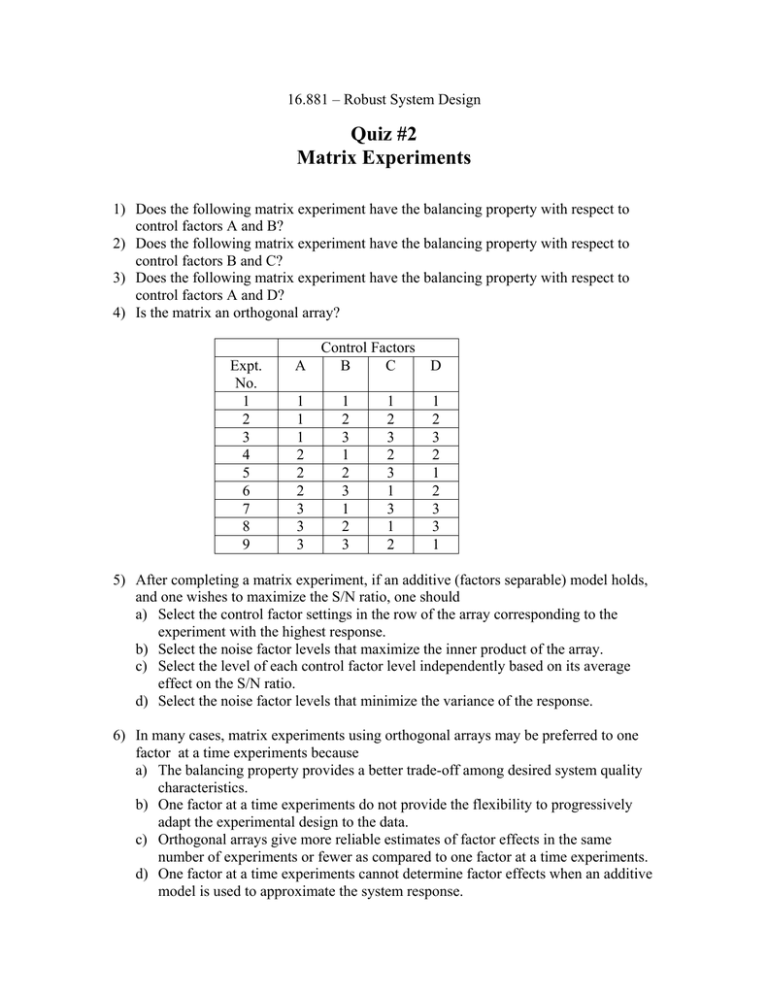
16.881 – Robust System Design Quiz #2 Matrix Experiments 1) Does the following matrix experiment have the balancing property with respect to control factors A and B? 2) Does the following matrix experiment have the balancing property with respect to control factors B and C? 3) Does the following matrix experiment have the balancing property with respect to control factors A and D? 4) Is the matrix an orthogonal array? Expt. No. 1 2 3 4 5 6 7 8 9 A 1 1 1 2 2 2 3 3 3 Control Factors B C 1 2 3 1 2 3 1 2 3 1 2 3 2 3 1 3 1 2 D 1 2 3 2 1 2 3 3 1 5) After completing a matrix experiment, if an additive (factors separable) model holds, and one wishes to maximize the S/N ratio, one should a) Select the control factor settings in the row of the array corresponding to the experiment with the highest response. b) Select the noise factor levels that maximize the inner product of the array. c) Select the level of each control factor level independently based on its average effect on the S/N ratio. d) Select the noise factor levels that minimize the variance of the response. 6) In many cases, matrix experiments using orthogonal arrays may be preferred to one factor at a time experiments because a) The balancing property provides a better trade-off among desired system quality characteristics. b) One factor at a time experiments do not provide the flexibility to progressively adapt the experimental design to the data. c) Orthogonal arrays give more reliable estimates of factor effects in the same number of experiments or fewer as compared to one factor at a time experiments. d) One factor at a time experiments cannot determine factor effects when an additive model is used to approximate the system response. 7) In order to conduct a full factorial experiment on a system with 4 control factors each having 3 levels (with no replicates), how many experiments would one would need to conduct? 8) In order to resolve only the main effects in a system with 4 control factors each having 3 levels (with no replicates), how many experiments would one would need to conduct? 9) The verification experiment primarily serves to a) Confirm that the assumptions in the experiment actually hold and that therefore the predicted improvement in system performance can be realized b) Establish that the experiment was indeed orthogonal c) Provide additional tuning of the noise factor levels d) Provide data needed for ANOVA 10) A response y is known to be governed by the relationship y=ax+b where x is a random variable with a mean of 2 and standard deviation of 3. The losses L due to deviation of y from its target m are given by L(y)=k(y-m)2 Which settings of a and b among those listed will give the lowest expected value of quality loss? a) b) c) d) a=3, a=3, a=2, a=2, b=m b=m-3 b=m b=m-2
